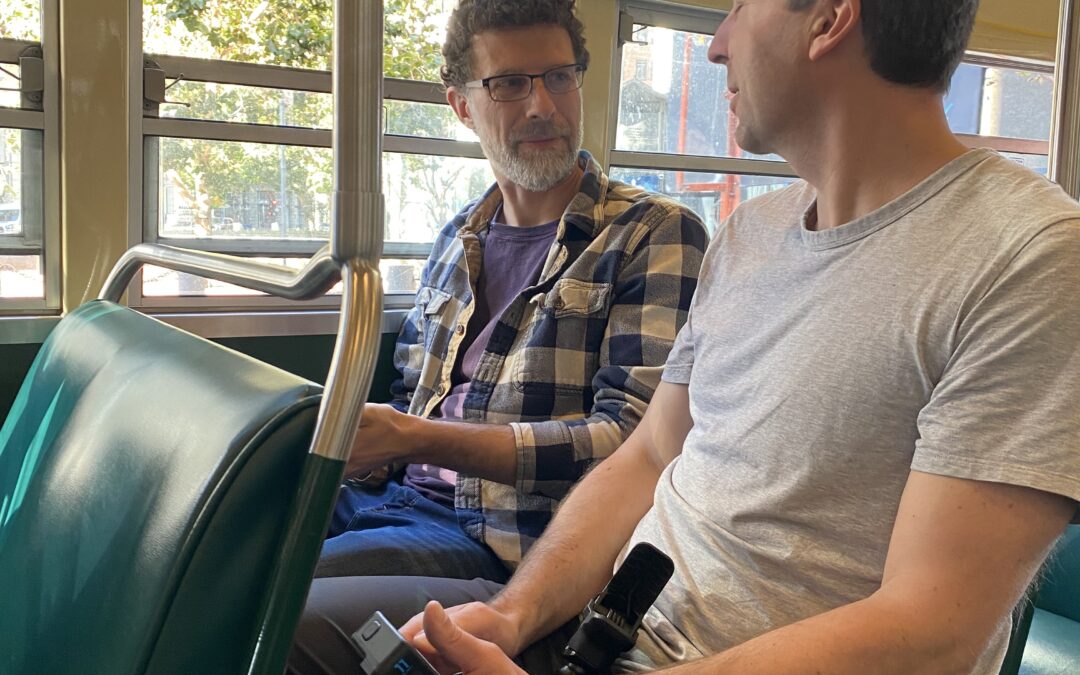*Below is an update of recent transit news from Cyrus Hall, who leads SFTR’s Local Funding Working Group, sent in early December.
First, the proposed Charter Amendment that would have given the Mayor the ability to veto parking or fare increases was withdrawn by the sponsor, Supervisor Safai, after significant opposition, including from SFTR. This is a significant victory, but it appears to have come with a short-term cost: the agency has no plans to move forward with the parking changes proposed this past May. Instead, new plans are being drawn up for 2025 — notably after the November 2024 election. The current budget projections assume the proposed parking changes would have gone into effect, so this retreat means the agency has to find ~$15–20M in operational revenue elsewhere in future years.
Which brings us to the 2022–2023 (ie, FY23) financial presentation made by SFMTA CFO Mawhorter last week at the SFMTA Board. FY23 came in under budget, mostly thanks to not backfilling open positions, and there was a $34.4M roll-forward of federal relief funds to FY24. The total amount of federal relief funds remaining is $334M, which is projected to take the agency through most of the first half of FY26 as long as no more transit service is brought online, and the agency continues to not backfill open positions.
The ability to stretch these funds is in large part thanks to funds allocated from the Bay Area Metropolitan Transportation Commission (MTC) to SFMTA and other agencies. SFMTA is set to receive $99.5M in FY25, and $209M in FY26. These amounts do not solely close SFMTA’s operational deficit in either fiscal year, but they allow the agency to stretch the pre-existing federal funds further (however, see the notes below on the state deficit!). 61% of the money distributed by MTC is from the state, won as part of this past May/June state budget fight to restore capital funds and extend new operational funds. The other 39% comes from redirected regional funds.
So, the agency can stretch one-time federal funds a bit longer. However, without additional operating funds, we’re stuck at current Muni service levels, and the agency won’t have the staff needed to engage fully everywhere it is needed (in particular, planning and Vision Zero). We hear that many staff are working well over 40 hour weeks to keep things moving. This is not sustainable for any organization long term. The agency is using external contractors to try and bridge gaps, but wants to bring that in as well, trying to stretch the federal money further.
In big picture news, the California Legislative Analysis Office (LAO), a state agency that provides fiscal advice to the California legislature, announced a projected state deficit of $68B in FY25 (July 2024 — July 2025). Yes, that’s a B, as in $68 billion. That’s nearly 30% of the final FY24 budget — a truly huge amount of spending will need to be cut, or new revenue passed at the ballot box. The LAO report makes recommendations on what to do, and explicitly mentions pulling back the transit funding that was extended last budget cycle. The legislature doesn’t have to take the LAO’s advice, but it is hard not to imagine a fight developing over money that was already contentious and hard to get the first time around.
Finally, SFMTA Chief Strategy Officer Jonathan Rewers presented on long term capital needs during last week’s SFMTA Board hearing. This was a very long, packed presentation, and I encourage everyone to take a look, as there are too many interesting tidbits to call out here. Some top-level numbers: The agency needs to invest $810M per year to meet their asset replacement schedule (ie, replace buses, buildings, etc, as they age out), eliminate a backlog of already aged out assets that are still in use (eg, Potrero Yard), and invest in upcoming needs (train control replacement, safe streets, etc). However, the agency is only barely meeting Federal Transit Administration requirements, investing just $250M per year. Without a capital infusion, Muni’s state of good repair will decline as assets wear out, and service reliability will suffer.
The agency is continuing to explore moving the next capital GO bond aimed at transit to 2024 from 2026. Since the last transit GO bond, Prop A, lost in June 2022, the agency is operating with significantly less capital funds than it was expecting to have. Moving the transit GO bond forward to 2024 would help restore funding before the agency builds up an even larger backlog of assets past their useful life. However, even doubling the yearly capital spend would be insufficient to stop growth of assets past their end of life; the agency projects it would need to spend $628M a year to meet that goal. The politics of moving the GO bond forward are difficult, as it would delay a housing bond that is seen as a priority by many in the city.
Tucked away at the end of CSO Rewers presentation are suggested policy actions for the next agency budget cycle. One item particularly caught my eye: the removal of the single-fare Clipper discount. Currently, single-fares on using a Clipper and MuniMobile get a $0.50 discount, and cost only $2.50 as opposed to $3.00 in cash. Combined with the already planned fare increase of $0.25 to single-fares, and we could see a 30% increase in single-fares in 2024, from $2.50 to $3.25. This would clearly be a huge ask of riders.
*To increase your involvement in local transit advocacy, consider joining one of SFTR’s Working Groups. Sign up here: https://sftransitriders.salsalabs.org/workinggroupsignup/index.html


